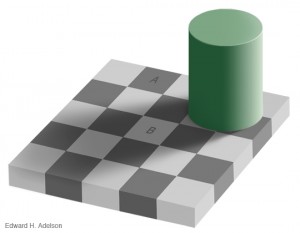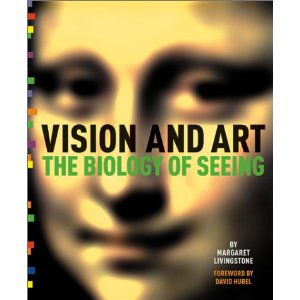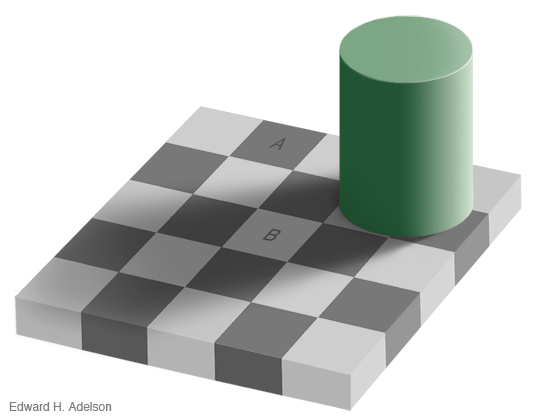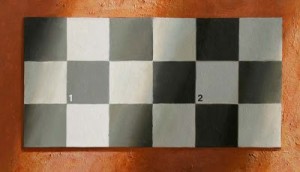 One of the most important concepts in color study is an appreciation of the difference between what a color is and what it appears to be.
One of the most important concepts in color study is an appreciation of the difference between what a color is and what it appears to be.
In our book, Lindly and I introduced this concept in the Chapter “Games Colors Play.” We explored simultaneous contrast, blending, and the apparent shifting of hue, value and saturation depending on context. These are all optical illusions.
This checker shadow illusion, created by Edward H. Adelson, is one of the most fascinating optical illusions of value shifting. In this case, believe or not, Color A and Color B are the same value.
This is James Gurney’s painted version. Color 1 and Color 2 are the same value. Gurney’s explanation is one of the easiest to understand.
Thanks to Gurney for the link to the video version of this famous illusion by brusspup.
Brusspup has a number of fun videos on illusions. In an interview last year he said he takes between three hours and five days to set up and film his illusions. What fun!
 The scientific explanations for optical illusions are the domain of visual neurobiologists. A few years ago I read Margaret Livingston‘s book, Vision and Art: The Biology of Seeing. It was an eye opener. It was also very complex. I understood about half of it and caught slippery glimpses of insight into the other half. (Puns intended.)
The scientific explanations for optical illusions are the domain of visual neurobiologists. A few years ago I read Margaret Livingston‘s book, Vision and Art: The Biology of Seeing. It was an eye opener. It was also very complex. I understood about half of it and caught slippery glimpses of insight into the other half. (Puns intended.)
But thankfully you don’t have to understand how illusions work to appreciate them. Michael Bach has the most comprehensive site on optical illusions. Do not go there unless you have a few hours to sit and wonder!



August 24, 2011 at 11:20 pm
Thanks Beth. Glad to see you are following along! Maggie
August 23, 2011 at 11:40 pm
Thanks for posting this. It is unbelievable!